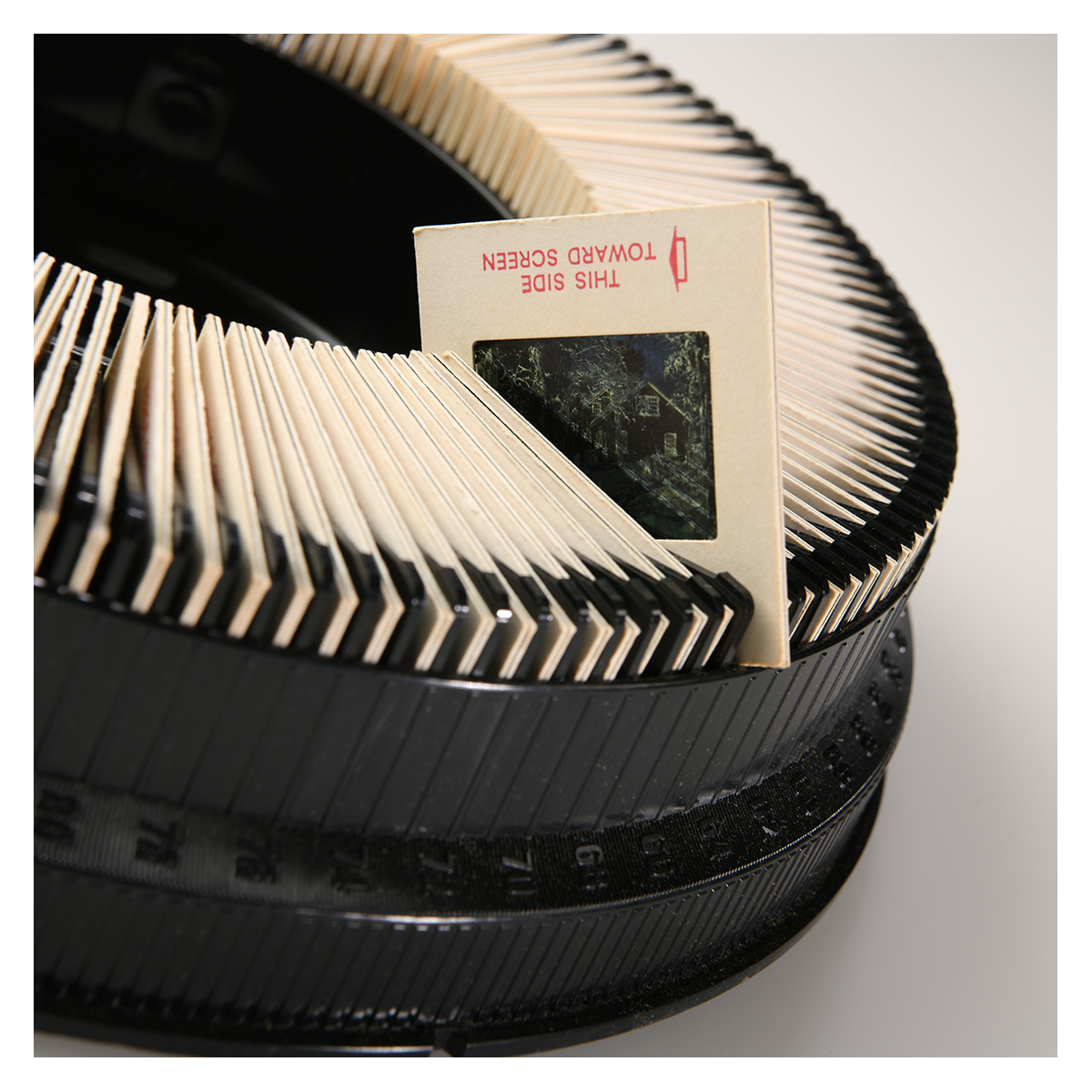
09 Oct Toss or Keep? An Argument to Keep Slides & Negatives
Get the Printer Friendly Version
Download a PDF of this article to save your device or print for offline reading.
Every once in a while, Mary Lou gives a talk to genealogy groups. It’s always a lot of fun to connect with enthusiastic family history experts and photo lovers. At one event, an attendee asked her, “I had all of my slides digitized. Now the photos won’t open on my computer. Is there any way to fix them?” Mary Lou asked them if they still had the slides. They said no; they threw them all away.
Now, there are many ways to give Mary Lou chest pains, and one surefire way is to tell her you threw your photos away. For this attendee, there really wasn’t much we could do. If the digital file failed or was corrupt and they didn’t have the original slide, then the image was gone forever. If they had the original, we could have created a new digital photo for them.
For years, people tried to streamline their belongings and cultivate a minimalist lifestyle. We understand the desire to declutter and have attacked our fair share of basements, attics, and garages with gusto. Sometimes, you just have too much stuff, and it has got to go. However, the “scan it and toss it” mindset is not the best approach when it comes to dealing with your family photos–including slides and negatives.
Most people think that slides and negatives are an obsolete format. That isn’t true. Film is still made by manufacturers and used by photographers. IT companies use tape to back up corporate data in addition to hard drives and cloud services. Slides and negatives are reliable and sustainable. They hold tons of data without taking up much physical space. If taken care of, film will outlast many digital formats.
So, what should you do with your slides and negatives? Here are a few tips:
Digitize & Keep
We believe you should digitize and properly store your slides and negatives. Film provides valuable information for genealogists in addition to serving as a backup for digital photos. Slides and negatives are often–not always, but often–the original generation of an image, and its format can help date a photo. Certain formats were only in use for a limited period of time, and this makes it easier to date.
Each copy or manipulation of the image is another generation. For example, a scan is a second generation, an email of that scan is a third generation, and so on. With every generation, you lose a little more information from the original. Sometimes it’s a small amount–something hardly noticeable. Other times, it’s a drastic shift. It’s harder to restore a photo from a poor third-generation image than it is to work with an original slide.
Why? Take a look at these scenarios:
- The scan of the slide or negative was not properly scanned from the beginning (poor resolution, cheap machine, bad technique).
- The digital file may have been properly scanned, but it was downsized, and the original digital file is not accessible.
- The image was cropped by a machine that made a cheap, standard-size print. Part of the composition was lost in cropping.
- The photo is a short-term dye sublimation print that fades after a few years.
- A drive failed or the cloud didn’t back up your images, and all that is left is a cell phone photo of the original.
- The CD or DVD containing the image is degraded or unreadable.
If this happens, you can always go back to the original film format and create a new digital image. If the original is thrown away, then you have nothing to go back to. You may have lost the image forever and must settle for something that is less than perfect.
Storage Tips
Here is some good news: slides and negatives take up less space when they are properly stored. You can take them out of bulky carousels and flimsy folders and store them in an archival sleeve or museum box. Some pieces, such as glass negatives, require special housing. Do your research or consult a professional before purchasing anything. University Products and Gaylord Archival are two fantastic resources.
Slides and negatives should be stored in a stable environment–cool temperatures and out of direct sunlight. Main-floor closets and bookshelves are great places to store photos. Certain formats need slightly different environments. The Library of Congress has helpful information about handling photographs and negatives.
When stored properly, slides and negatives will outlast digital formats. They may take up a little space, but it is a small price to pay for saving your history–and much cheaper than paying to save a terrible box store push-button copy. If you truly do not want your slides and negatives, consider giving them to a family member or donating them to an archive collection.
Want to learn more about photo storage? Check out our guide.

